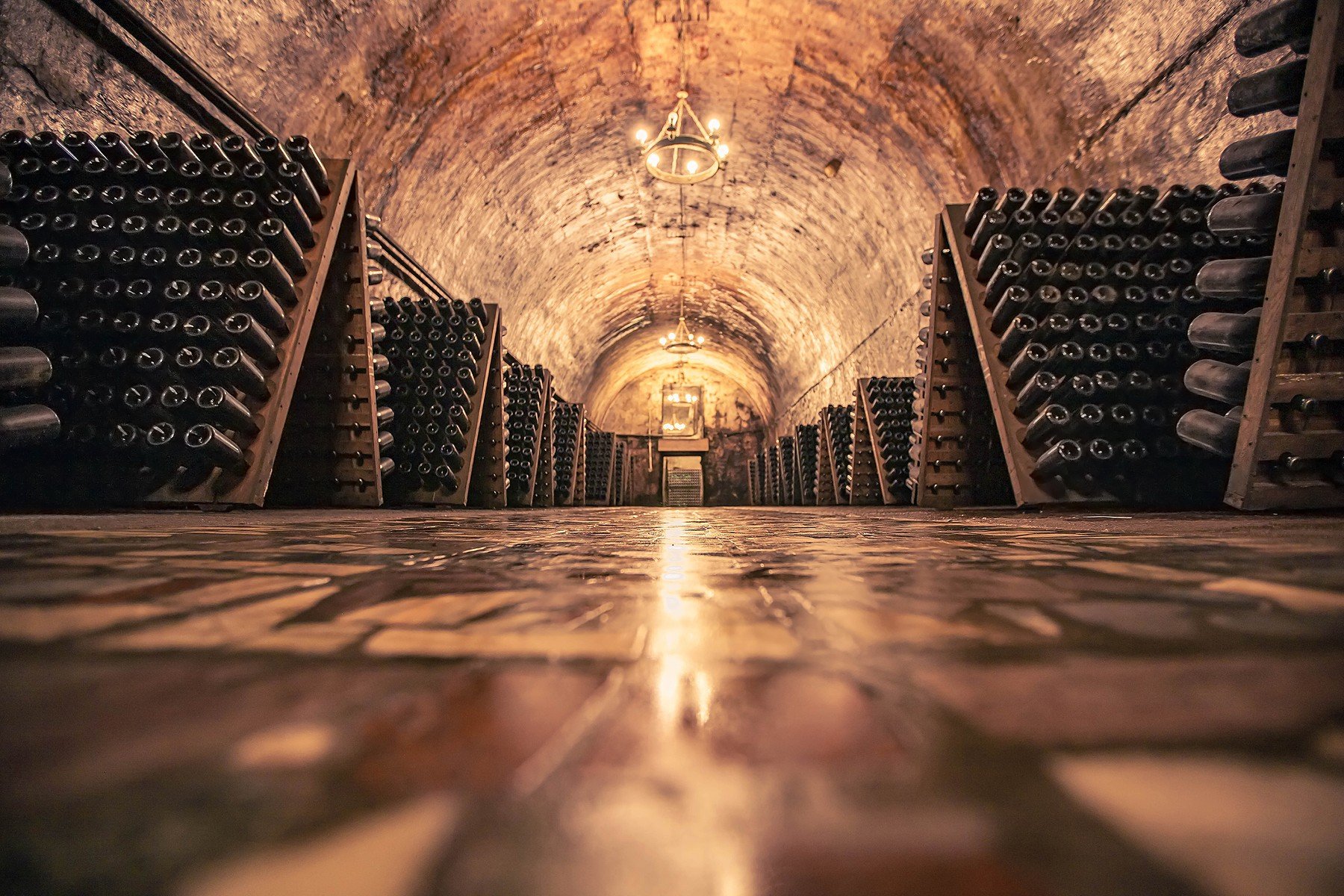Méthode Champenoise
Champagne Bottles in a Cave
Méthode Champenoise or Méthode Traditionnelle is the process used to make French Champagne, as well as many other fine sparkling wines around the world. There are several methods for making sparkling wine, although the traditional method is thought to produce the best quality.
What is Unique about the Traditional Method?
In the traditional method, the wine goes through a secondary fermentation in its own bottle. Unlike still wines that are fermented only once in tanks, barrels or other vessels, sparkling wines are fermented twice. The second fermentation is what makes the wine “sparkle”.
The second fermentation is called “prise de mousse” in French, which literally means, “capturing the sparkle”
After the initial fermentation, the sparkling wine is bottled with an additional mixture of sugar and yeast, called the liqueur de tirage. The sugar acts on the yeast producing carbon dioxide gas that is trapped in the bottle, secured by a crown cap (like a bottle of beer). Quality sparkling wines are left on the yeast, or lees, for several months, sometimes years.
Does the Yeast Stay in the Bottle?
No, and this is another distinctive feature of the Méthode Champenoise. The reaction of the sugar and yeast produces carbon dioxide and dead yeast cells. The residual yeast cells are removed by a process called disgorgement.
What is Disgorgement?
It isn’t exactly the most appealing word for such an elegant wine. It sounds much better in the original French – dégorger. In disgorgement the dead yeast cells are propelled from the bottle when the crown cap is removed. A process called riddling (see below) is used to get all the dead yeast cells into the neck of the bottle.
Then the neck is frozen creating an icy plug of the residual cells. When the crown cap is removed, the plug is forced from the bottle by the pressure of the carbon dioxide in the wine. It’s quite an ingenious process. Although it can be done by hand, disgorgement is much faster and safer to do by machine. It’s fascinating to watch - providing you have on a pair of safety glasses!
Bottles Ready to Freeze Necks for Disgorging
Bottles with Frozen Necks Before Disgorging
What is Riddling?
Prior to removal of the crown cap, the bottles are riddled (remuage in French). The bottles are placed neck down in riddling racks and gently shaken and turned slightly each day until all the dead yeast cells are in the neck of the bottle. The process can be done by hand by experienced “riddlers”. Today it is more common to accomplish riddling in huge, mechanized cages that gently shake the wines on a daily schedule.
Riddling Racks in a Cave
Riddling in a Gyropalette
Why is Méthode Champenoise Preferred?
Fermenting the wines in their own bottle is what produces the fine bubbles that are coveted in the best Champagnes and sparkling wines. There are other methods of producing sparkling wines that are faster and less expensive, but do not produce the delicate bubbles and more complex flavors of a fine sparkling wine.
Still Thirsty?
Learn more from this list of the best articles about the Méthode Champenoise.
Disgorgement (Videos of Amista Winemaker Describing the Eight Steps)





